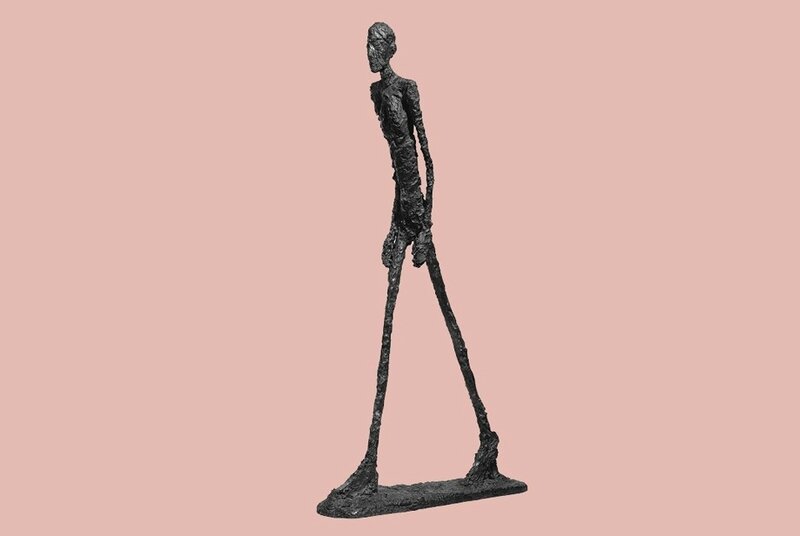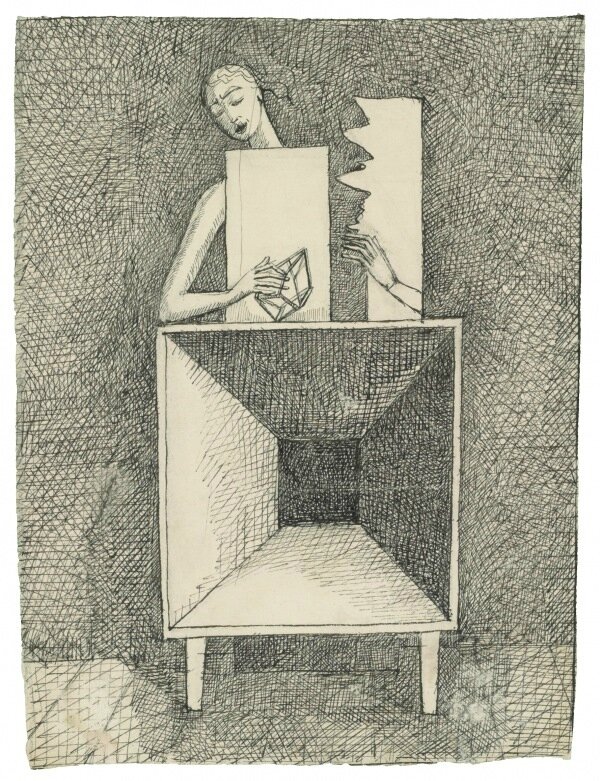Tate Modern opens the UK's first major retrospective of Alberto Giacometti for 20 years
Alberto Giacometti: The Walking Man I, 1960. © The Estate of Alberto Giacometti (Fondation Giacometti, Paris and ADAGP, Paris)
'I am very interested in art but I am instinctively more interested in truth […] The more I work, the more I see differently'. Alberto Giacometti.
LONDON.- Celebrated as a sculptor, painter and draughtsman, Giacometti’s distinctive elongated figures are some of the most instantly recognisable works of modern art. This exhibition reasserts Giacometti’s place alongside the likes of Matisse, Picasso and Degas as one of the great painter-sculptors of the 20th century. Through unparalleled access to the extraordinary collection and archive of the Fondation Alberto et Annette Giacometti, Paris, Tate Modern’s ambitious and wide-ranging exhibition brings together over 250 works. It includes rarely seen plasters and drawings which have never been exhibited before and showcases the full evolution of Giacometti’s career across five decades, from early works such as Head of a Woman [Flora Mayo] 1926 to iconic bronze sculptures such as Walking Man I 1960.
Alberto Giacometti, L'homme qui chavire, 1950. © The Estate of Alberto Giacometti (Fondation Giacometti, Paris and ADAGP, Paris)
Born in Switzerland in 1901, Giacometti moved to Paris in the 1920s where he became engaged with cubism and latterly joined the Surrealist Group in 1931. Celebrated works such as Woman with her Throat Cut 1932 reveal Giacometti’s engagement with surrealism as well as his powerful explorations of brutality and sadism. A wide range of the artist’s large scale sculptures are also showcased alongside his drawings and books. Other works like Untitled (mask) 1934 demonstrate his engagement with the decorative arts, while Man (Apollo) 1929 and The Chariot 1950 show his preoccupation with Egyptian and African art. The exhibition reveals how Giacometti, perhaps more than any other artist of his day, fused the ancient and the modern and broke down barriers between the decorative and the fine arts.
Alberto Giacometti, Surrealist Composition, c. 1933 © The Estate of Alberto Giacometti (Fondation Giacometti, Paris and ADAGP, Paris), licensed in the UK by ACS and DACS, London 2017
Giacometti left Paris in 1941, relocating to Geneva until the end of the Second World War. Having moved away from surrealism, he became interested in scale and perspective and began to work on much smaller sculptures in a more realistic style as in Very Small Figurine c.1937-9. Following the war and his return to Paris, Giacometti began creating the elongated figures for which he is best known. Working from life, his preoccupation with the alienated and isolated figure became an important motif, embodying the post-war climate of existential despair. The exhibition includes an astounding selection of such masterpieces including Man Pointing 1947, Falling Man 1950 and The Hand 1947 as well as many of Giacometti’s major paintings like Diego Seated 1948 and Caroline in a Red Dress c.1964-5.
Alberto Giacometti, Man Pointing, 1947, Tate © Alberto Giacometti estate / ACS+DACS in the UK, 2017
While Giacometti is best known for his bronze figures, Tate Modern is repositioning him as an artist with a far wider interest in materials and textures, especially plaster and clay. The elasticity and malleability of these media allowed him to work in an inventive way, continuously reworking and experimenting with plaster to create his distinctive highly textured and scratched surfaces. A large number of these fragile plaster works which rarely travel are being shown for the first time in this exhibition including Giacometti’s celebrated Women of Venice 1956. Created for the Venice Biennale, this group of important works are brought together for the first time since their creation.
Alberto Giacometti, 'Jean Genet', 1954 or 1955, Tate © The Estate of Alberto Giacometti (Fondation Giacometti, Paris and ADAGP, Paris), licensed in the UK by ACS and DACS, London 2017
The exhibition also explores some of the key figures in the artist’s life who were vital to his work including his wife Annette Giacometti, his brother Diego and his late mistress Caroline. Giacometti’s personal relationships were an enduring influence throughout his career and he continuously used friends and family as models. One room in the exhibition focusses specifically on portraits demonstrating Giacometti’s intensely observed images of the human face and figure.
Alberto Giacometti, 'Caroline', 1965, Tate © The Estate of Alberto Giacometti (Fondation Giacometti, Paris and ADAGP, Paris), licensed in the UK by ACS and DACS, London 2017
Alberto Giacometti is curated by Frances Morris, Director, Tate Modern and Catherine Grenier, Director, Chief Curator, Fondation Alberto et Annette Giacometti, Paris with Lena Fritsch, Assistant Curator, Tate Modern assisted by Mathilde Lecuyer, Associate Curator, Fondation Alberto et Annette Giacometti. The exhibition is organised by Tate Modern and Fondation Alberto et Annette Giacometti, Paris. It will be accompanied by a catalogue from Tate Publishing, co-edited by Frances Morris and Lena Fritsch, with Catherine Grenier and Mathilde Lecuyer.
Alberto Giacometti, Bust of Annette IV, 1962, cast 1965, Tate © The Estate of Alberto Giacometti (Fondation Giacometti, Paris and ADAGP, Paris), licensed in the UK by ACS and DACS, London 2017
Alberto Giacometti, Bust of Diego, 1955, Tate © The Estate of Alberto Giacometti (Fondation Giacometti, Paris and ADAGP, Paris), licensed in the UK by ACS and DACS, London 2017
Alberto Giacometti, The Dog, 1951, Kunsthaus Zürich, Alberto Giacometti Stiftung (inv. GS47) © Alberto Giacometti Estate, ACS/DACS, 2017

/https%3A%2F%2Fprofilepics.canalblog.com%2Fprofilepics%2F1%2F0%2F100183.jpg)
/https%3A%2F%2Fstorage.canalblog.com%2F03%2F02%2F119589%2F96711876_o.jpg)
/https%3A%2F%2Fstorage.canalblog.com%2F11%2F31%2F119589%2F94773502_o.jpg)
/https%3A%2F%2Fstorage.canalblog.com%2F20%2F83%2F119589%2F94772815_o.jpg)
/https%3A%2F%2Fstorage.canalblog.com%2F26%2F72%2F119589%2F75604929_o.jpg)
/https%3A%2F%2Fstorage.canalblog.com%2F59%2F60%2F119589%2F26458628_o.jpg)











/http%3A%2F%2Fstorage.canalblog.com%2F60%2F34%2F119589%2F128961949_o.png)
/http%3A%2F%2Fstorage.canalblog.com%2F48%2F57%2F119589%2F127874617_o.jpg)
/http%3A%2F%2Fstorage.canalblog.com%2F66%2F66%2F119589%2F127181870_o.jpg)
/http%3A%2F%2Fstorage.canalblog.com%2F46%2F13%2F119589%2F126868716_o.jpg)